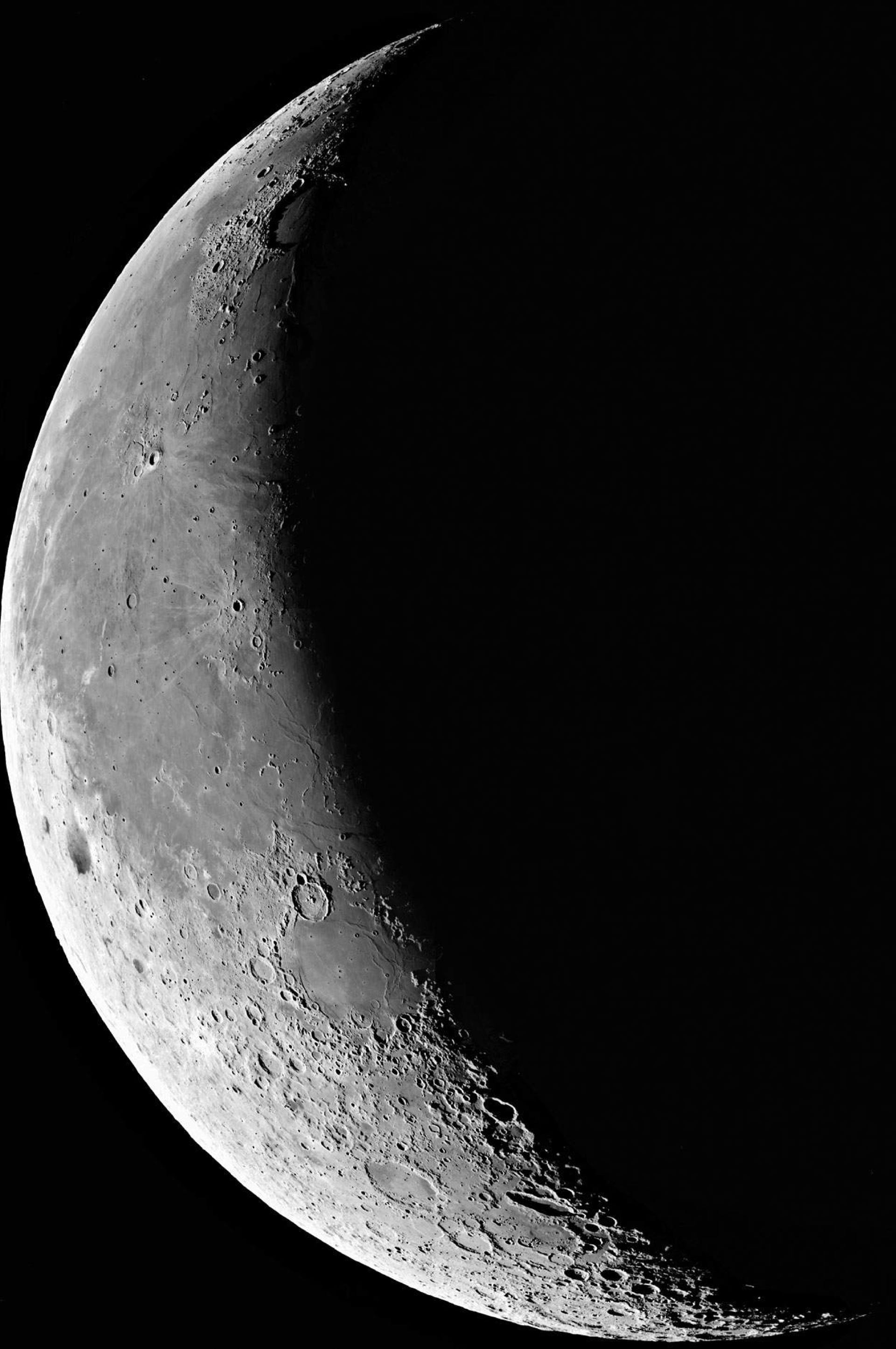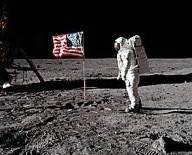

Exploring the Moon
A history of lunar discovery from the first
space probes to recent times
Exploring the Apollo landing sites – 2
Most spectacular of all six Apollo landing sites was the snaking valley of Hadley Rille near the foot of the lunar Apennine mountains, visited by Apollo 15 at the end of July 1971. LRO’s view of the Apollo 15 landing area shows the Lunar Roving Vehicle (LRV) parked on one side of the lunar module Falcon, with the ALSEP scientific experiments and a laser reflector on the other side.
As well as the vertical view from LRO, a Japanese probe called Kaguya has photographed the Apollo 15 site. It detected the halo caused by the lunar module’s descent engine and produced this impressive oblique landscape (below left) of Hadley Rille and the hummocky mountains behind it, much as they appear in the photographs shot by the astronauts on the surface (right).
The penultimate manned landing, Apollo 16, was the only Apollo mission to visit the lunar highlands, touching down near a crater called Descartes. This picture of the site from LRO was taken with the Sun almost directly overhead. The overhead lighting emphasizes the dark haloes around the lunar module Orion and the lunar rover where astronauts John Young and Charles Duke churned up the soil with their feet.
Apollo 17 was the last and longest Apollo mission. Some of LRO’s most astonishingly detailed images are of the Apollo 17 site, which you can explore in this video. Trails of footprints and tracks from the LRV criss-cross the dusty lunar plain on the southeastern Mare Serenitatis. An enlargement of the descent stage of their lunar module, Challenger, even shows the two Portable Life Support System backpacks (PLSS) from their Moon suits, discarded to save weight before take-off.
These LRO pictures remind us not only of the astronauts who risked their lives going to the Moon but the thousands of dedicated engineers, scientists and other unheralded workers who designed and built the craft that got them there and back safely. One day, tourists will visit the Moon to see for themselves these Apollo landing sites which are lasting monuments to the courage and ingenuity of those involved in one of the greatest achievements in the history of human exploration.
When will we return?
At the time of writing, NASA plans to return humans to the Moon in 2025 or thereafter in a programme called Artemis. In this, four astronauts would travel to the Moon in the Orion spacecraft, which looks like an oversized version of the Apollo command module. Two of the crew, one of them a woman, would descend to the south polar region of the Moon in a landing module, remaining for a week before rejoining Orion and returning to a splashdown in the Pacific, much as in the Apollo missions.
Oblique view of Hadley Rille and the mountains beyond from Japan’s
Moon orbiter Kaguya (left) compared with the view from the surface
taken by the Apollo 15 astronauts. Click to go to the original page on the
Japan Aerospace Exploration Agency (JAXA) website.
Exploring the Apollo landing sites 2
